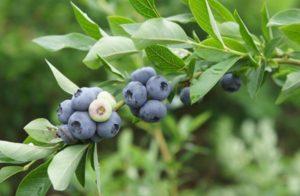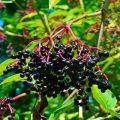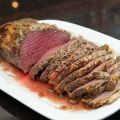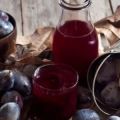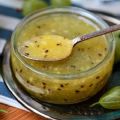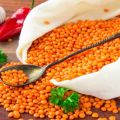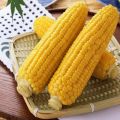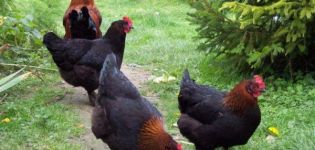Medicinal properties and contraindications of black elderberry fruits
The fruits of the black elderberry are endowed with medicinal properties, while the red elderberry is quite poisonous. People have long enjoyed the beneficial qualities of the bush. He is especially loved by the Germans, Poles, Danes and Czechs. This was even reflected in their proverbs, fairy tales and customs.
The main characteristic of the shrub and the composition of the berries
The black elderberry is a shrub or small tree in the Honeysuckle family. Mainly grows wild. Sometimes planted in gardens, but quickly run wild. Feels comfortable both in the shade and in the sun.
The plant grows to a height of 3 to 10 meters. Leaves are pinnate, petiolate. The flowering period runs from May to mid June. Elderberry inflorescences are collected from small flowers of yellowish-white or cream color.
Fruits in the form of small berries, black-purple color. The ripening period begins in late August - early September. The berries contain many useful elements.
| Vitamins | Trace elements | Macronutrients | Essential amino acids | Essential amino acids |
| Vitamin C | Iron
| Potassium | Arginine | Glutamic acid |
| Vitamin A | Copper | Calcium | Valine | Alanin |
| Vitamin B1 | Zinc | Magnesium | Histidine | Glycine |
| Vitamin B2 | Selenium | Magnesium | Isoleucine | Aspartic acid |
| Vitamin B5 | Sodium | Lysine | Serine | |
| Vitamin B6 | Phosphorus | Leucine | Tyrosine | |
| Vitamin B9 | Methionine | Proline | ||
| Vitamin PP | Threonine | Cesteine |
Collection and procurement
Inflorescences, berries, leaves and plant bark are used as medicinal raw materials.

Inflorescences
Collecting inflorescences begins with the beginning of their blooming. After they are cut off from the peduncles and dried in special dryers, setting the temperature to 30-35 ° C. Also, elderberry can be dried with whole inflorescences in the open air in your summer cottage, the main condition is shade. In this case, it is laid out on the litter in one layer.
After the raw material is completely dry, it is ground and stored in cotton bags at a moisture content of no more than 14%. Can be stored for up to 2 years.
Berries
They are harvested after full maturity, this is the period from late August to September. The berries are picked or cut in whole bunches. Spread out in a thin layer in the fresh air and wither. Next, the berries are dried in dryers, ovens or ovens. The temperature in this case needs 60-65 ° C. After drying, the berries are plucked from the branches. They will be black on the outside and burgundy on the inside. Dried berries have a sweet and sour taste and faint aroma.
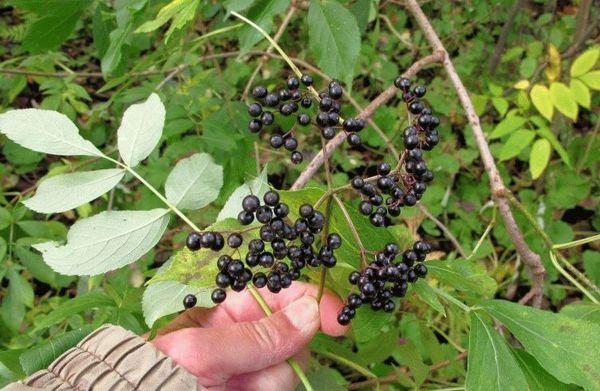
The harvested berries are stored in cool, well-ventilated areas.Periodic inspection of raw materials is required, as the berries often grow moldy and lose their properties. Shelf life is six months.
Leaves
Leaves are picked in spring. Dry in the open air in the shade or in a dryer. Transfer to a paper or cotton bag and store in a dry place. You can use the fee throughout the year.
Bark
It is harvested in early spring, before sap flow begins. For this, two-year branches are chosen. The bark is detached from the core, the top is removed and dried using dryers or ovens. Dry raw materials are ground to a powdery state. Store for 3 to 5 years.
Useful properties of elderberry
Black elderberry is rich in many beneficial properties, for example, its inflorescences are endowed with anti-inflammatory, diuretic, expectorant and diaphoretic actions. They also provide antibacterial, antipyretic and sedative effects.
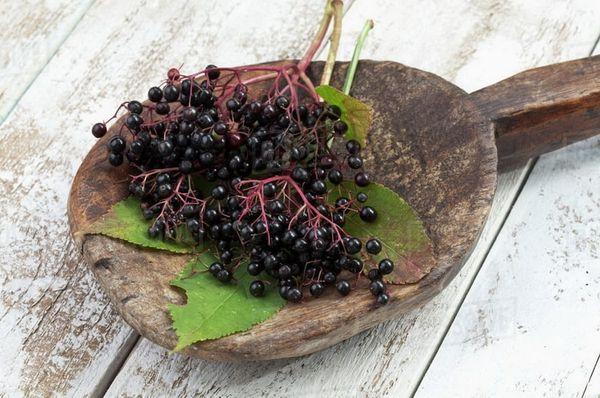
The properties of berries are slightly different. They also have expectorant and diaphoretic properties, but in addition, they have a choleretic, laxative, diuretic and tonic effect. Leaves are able to soothe pain, relieve mild inflammation and strengthen the work of sweat glands. In addition, the leaves have tonic, diuretic, laxative and blood-purifying properties. The bark is used as a diuretic, laxative and emetic.
Indications for use
Berries and other parts of the black elderberry are used for a variety of diseases, namely:
- Decreased immunity (elderberry is rich in vitamins, and especially vitamin C, which helps to restore the immune system).
- Risk of oncological diseases (the plant is an additional product for the treatment of patients with skin and stomach cancer).
- Malaria (in this disease, berries and bush seeds should be consumed).
- Hepatitis (the use of elderberry infusion relieves the condition with this disease).
- Arthritis, rheumatism (elderberry promotes the excretion of urea from the body, which makes it easier for these diseases).
- Kidney disease (decoctions from the bark of the plant help with kidney disease).
- Problems in the endocrine system (elderberry is able to establish metabolic processes in the body).
- Diseases of the gastrointestinal tract (the laxative effect relieves the condition in diseases of the gastrointestinal tract, and vitamins and trace elements help to maintain normal microflora).
- Rubella, measles (infusion of the fruits of the plant facilitates the course of diseases).
- Intoxication (elderberry is able to remove toxins and toxins from the body).
- Stagnation of bile (dry berries increase the secretion of bile).
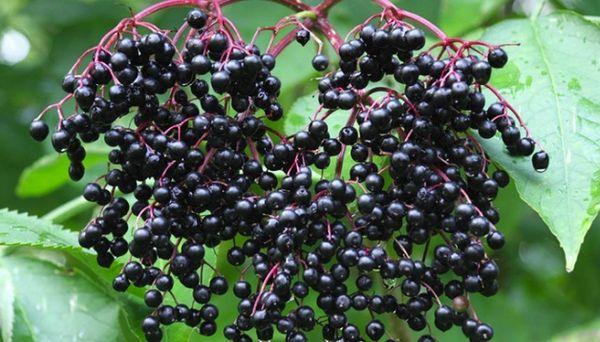
Folk recipes
Black elderberry is quite famous in folk medicine, as it contains many biologically active substances.
Infusion of flowers for drinking
Required components:
- elderberry flowers (dry or fresh) - 1 tbsp. l .;
- water - 1 tbsp.
Preparation:
- Tear off the flowers from the inflorescence and send to an enamel container.
- Pour a glass of boiled water and boil for 15 minutes.
- Remove from heat and let cool.
- Strain and top up with boiling water to get the original volume.
- Infuse for 30 minutes, wrapping the dish with a towel.
This infusion is taken orally 15 minutes before meals, 2-3 tbsp. l. as a diaphoretic or half a glass for flu, sore throat, SARS. It will also be useful for headaches or toothaches.

Required components:
- elderberry flowers (fresh) - 1 handful;
- alcohol (40%) - 1 liter.
Preparation:
- Pour fresh inflorescences with alcohol and close the lid.
- Insist for 1 week.
The infusion should be taken before bedtime, diluted with water in 30-40 grams. The course of prophylactic treatment is 3 weeks.
Infusion of flowers for external treatments
Required components:
- elderberry flowers - 4 tbsp. l .;
- water - 0.5 l.
Preparation:
- Raw materials are poured with boiling water and insisted for 20-30 minutes.
- Strain and cool the resulting tincture.
Used to treat gynecological problems.
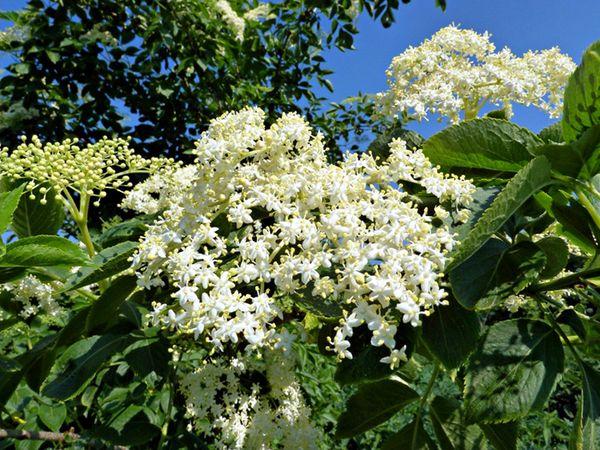
Required components:
- elderberry flowers (dry) - 1 tsp;
- water - 1 tbsp.
Preparation:
- Grind dried flowers and measure out the required amount.
- Pour boiling water over and cook in a water bath for 15 minutes.
- Then refrigerate and drain for 45 minutes.
- Top up with a little boiling water if necessary.
Infusion treats burns, diaper rash, skin rashes. Bury the eyes with conjunctivitis.
Laxative infusion of fruits
Required components:
- elderberries - 10 g;
- water - 1 tbsp.
Preparation:
- Boil water and cool slightly.
- Pour dried berries over it and leave for half an hour.
Drink in one go. Do not consume more than 1 time per day.
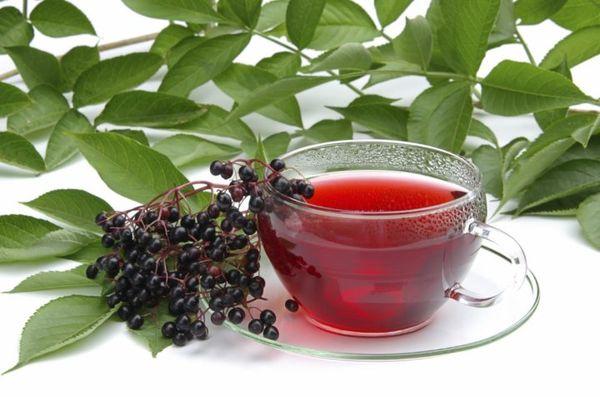
Required components:
- elderberries - 20 g;
- water - 1 tbsp.;
- honey - 0.5 tsp.
Preparation:
- Pour dry berries with a glass of boiled water and cover.
- Insist for 15-20 minutes.
- Pour through a sieve and add honey.
- Store in a cool place.
Drink a quarter glass 3 times a day. Honey can be added just before consumption. It not only makes the infusion more palatable, but also enhances the laxative effect.
Leaf poultices
Elderberry leaves are also often used in folk medicine.
Required components:
- elderberry leaves (dry) - 2-3 tbsp. l .;
- milk - 1 tbsp.
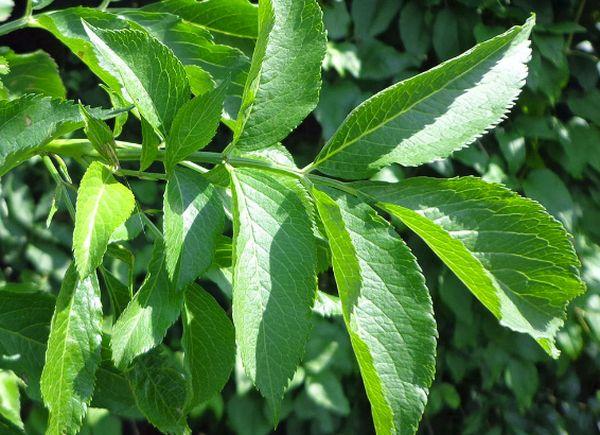
Preparation:
- Place the dried leaves in an enamel bowl and cover with milk.
- Cook for about 15 minutes.
- Cool the broth and use it as a lotion for boils, hemorrhoids and inflammatory processes on the skin.
Infusion of the bark for edema
The recipe is effective for renal edema.
Required components:
- green elderberry bark - 4 tbsp. l .;
- water - 2 tbsp.
Preparation:
- The bark should be crushed and filled with water.
- Put on fire and bring to a boil, cook for 5 minutes. Remove from heat, cover and leave for 10 minutes. It is necessary to consume such an infusion 3 times a day for half a glass.
Contraindications and precautions
The plant also has its own contraindications. It cannot be used both internally and externally for people with Crohn's disease, with chronic gastrointestinal diseases, people with diabetes, with autoimmune diseases, pregnant and lactating mothers, as well as children under 12 years old. This shrub is slightly toxic, so you should never exceed the dosage of drugs based on it, so that the beneficial effect does not turn into harm to health.
